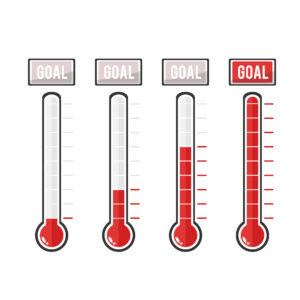Traditional approaches to fundraising management are not meeting new challenges in higher education, according to a recent survey. Those approaches also fail to address increased demands on advancement professionals to be more productive.
Major and planned giving has emerged as significantly more important to higher education success, especially as institutions’ fundraising goals increase, according to Key Challenges Reported by Major and Planned Giving Professionals, a report from higher-ed fundraising and enrollment products and services provider Ruffalo Noel Levitz.
The study is informed by a survey and follow up interviews administered this spring to 270 gift officers exploring factors including portfolio size and annual prospective donor visits, common performance metrics and sentiments around wealth and propensity ratings.
(Next page: Five challenges and three recommendations for fundraising management)
Those survey results yielded five key challenges:
1. Prospect pools are large and gift officer time is limited: Survey respondents repeatedly mentioned having too many assigned projects
2. Wealth Ratings are only moderately helpful: Just 27 percent of surveyed gift officers said wealth ratings were “quite effective” or “very effective” for focusing on the right prospects; only one-third of donors truly qualified on average
3. Total dollars booked is the top performance metric: 85 percent of respondents are rated on total dollars raised, and 66 percent said total dollars raised in the top-valued metric at their institution
4. Focus on the right prospects with limited time is a key barrier to success: 52 percent of respondents said they don’t have enough time to get everything one, and 50 percent of respondents said they primarily qualify by face-to-face visits with officers and just can’t do enough
5. Gift officers want to use their time differently: 55 percent of gift officers said they don’t spend enough time on solicitation
Survey respondents indicated they were able to visit with just 52 percent of their prospect pool per year, said Brian Gawor, CFRE and vice president for research at Ruffalo Noel Levitz, “indicating that a significant number of assigned prospects are not receiving an in-person contact each year. In major and planned giving this means many donors ignored and millions in donations lost.”
Challenges, including decreases in enrollment and retention and rising student financial aid needs, have amplified pressures on institutions to achieve higher fundraising goals. Major and planned gift commitments account for the vast majority of the funds given by donors to higher education.
But technology-driven fundraising strategies could help boost productivity.
“We are seeing an increased demand for gift officers to be more productive and secure results in a much more challenging and complex environment,” said Stephen J. Meyer, president and CEO of Ruffalo Noel Levitz. “We see institutions succeed when they apply new technologies and sales automation best practices to increase their productivity.”
The report offers three recommendations to help boost higher-ed fundraising efforts:
• Leverage your data with quality analytics that identify and engage the right major and planned giving donors. An approach that includes descriptive
ratings, like wealth scoring, along with validated predictive tactics, is important. Testing and updating these ratings more than once annually based
on gift officer success is key.
• Shift your metrics for gift officer productivity to include gift visit “win” rates” and booked gifts within defined timeframes. An underutilized metric is time from initial identification to gift close or release. This metric means that timely gift officer reporting/logging is also crucial, as soon as possible following donor visits.
• Pursue scalable, personalized tactics to qualify more donors since gift officer time is limited. This will help free up gift officer time for greater solicitation and stewardship.
- Where are microcredentials today–and where are they going? - April 22, 2024
- First-generation students are more likely to seriously consider leaving college - April 17, 2024
- How higher ed can meet workforce needs - April 15, 2024

